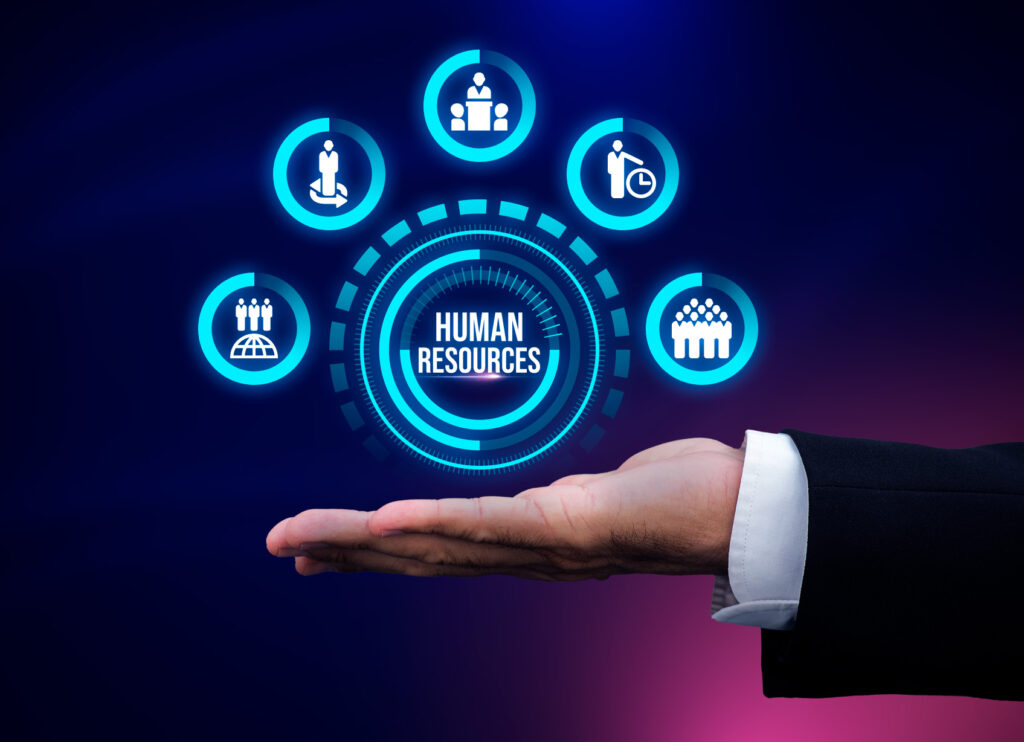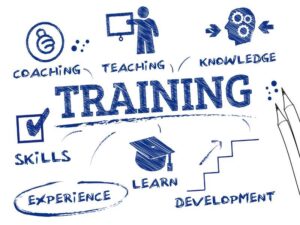
Human Resources Management (HRM) has always been a dynamic and multifaceted discipline in a rapidly evolving business landscape. It plays a crucial role in shaping the success and future of an organization. Over the years, this vital department of the organization has evolved, adapting to the changing needs of the workforce and the organization’s objectives. To understand the complexity, we will examine the three main phases of human resources management: Acquisition, development, and retention. Before discussing the three main HRM phases, let us review the basics of HRM in an organization and its recruitment function.
What is HRM in an Organization?
Human resource management (HRM) is concerned with hiring, training, and supervising the employees in a business. It handles any employee-related issue of the organization. The main functions of an HRM include the following:
- The Recruitment function
- Training and Development
- Professional development
- Compensation function
- Appraisal function
- Compliance Function
- Termination Function
On average, companies have 2.57 HR staff for every 100 employees.
The Recruitment Function of an HRM:
Hiring the most suitable candidate for a vacancy is a challenging task for HR managers of an organization. During recruitment, HRM goes through different phases to choose the most suitable candidate for the organization, enhance his leadership skills, and offer multiple benefits to retain within the organization.
What Are the Three Main Phases of Human Resources Management (HRM)?
The following are the three phases of HRM:
Phase 1: Acquisition (Pre-Hiring) Phase


The acquisition is the pre-hiring phase of HRM. It is the foundation of HRM upon which the entire human resources structure stands. This phase encircles all the activities related to attracting, selecting, and hiring the individuals possessing the skills, qualifications, and cultural fit required for the organization. The acquisition or pre-hiring phase can be further subdivided into three stages that include:
1.1 Recruitment: Identifying Talent
This initial step of the acquisition phase involves the strategic process of identifying, attracting, and engaging potential candidates for the job. The recruitment step includes:
- Evaluating the company’s employment needs (known as human resource planning)
- Creating compelling job descriptions
- Posting vacancies on various platforms
- Utilizing recruitment channels such as job boards, social media, and professional networks
The primary role of HR is to have the right people in the right roles in an organization. It significantly impacts the organization’s success.
1.2 Selection: Finding The Right Fit For the Job
Once a pool of candidates possessing potential capabilities has been identified, the selection process begins at HRM. Selection of the right candidate is a critical aspect of the acquisition. It aims to evaluate the right candidate’s technical skills and cultural fit within the organization. This stage involves assessing the candidates through various methods, such as:
- Interviews
- Aptitude tests
- Personality assessments
After going through these selection methods, HR can choose the right one.
1.3 Hiring: Onboarding and Integration of the Right Candidate
Hiring is the third and final step in the acquisition or pre-hiring phase. This part involves extending the job offer to the selected candidate and facilitating a smooth onboarding process. Onboarding helps integrate newly hired employees into the organizational culture. It provides them with the tools and resources to do their best and clarifies their company roles and expectations.
Phase 2: Development Phase


After a successful acquisition phase, the subsequent phase of HRM is called the development phase. This phase of HRM focuses on enhancing the workforce’s skills, knowledge, and capabilities. This phase also ensures that investing in employee development is essential for the long-term success and adaptability of the organization. The development phase has the following three stages:
2.1 Training and Development: Continuous Learning
Training and development are the basics of the development phase. Though the selected or hired employee has a long experience, he must learn the specific working culture of the company. Training and development consist of programs designed to enhance employees’ skills and keep them up-to-date with industry trends. This stage may include:
- Technical training
- Leadership development
- Soft skills workshop
A practical training and development program also contributes to the overall growth and innovation of the company rather than just improving individual performance. Moreover, it helps employees adapt to changing work environments and take on new responsibilities, contributing to their job satisfaction and career progression.
2.2 Feedback and Recognition: Performance Management
After a successful training and learning stage, development moves into another critical aspect known as performance management. This stage involves:
- Setting clear expectations for the employee
- Providing regular feedback
- Recognizing and rewarding employees for their contribution
In this stage, performance appraisals are commonly used, which are:
- To assess employees’ achievements
- Identify their areas of improvement
- Aligning individual goals with the company’s objectives.
This stage is also crucial as far as HR professionals’ role is concerned. They need to establish a transparent and fair performance management system.
2.3 Building Future Leaders: Succession Planning
It is a forward-thinking stage of the development phase. It usually involves identifying and preparing high-potential employees who must play key roles in the organization. According to the Society for Human Resources Management (SHRM), 68 percent of employees prefer to work with the same employer throughout their career if the employer tries to upskill them. A strong success planning process in the organization includes:
- Talent assessments
- Leadership development programs
- Mentorship initiatives
This proactive approach of HR managers ensures a smooth transition of leadership and minimizes the disturbance in the case of resignations, retirements, or unexpected departures.
Phase 3: Retention (Post-Hiring) Phase


The retention or post-hiring phase refers to preserving the talent within the organization. This phase recognizes the value of retaining skilled and experienced employees, which is essential for achieving long-term stability and success. This phase also has three stages, which are:
3.1 Employee Engagement: Encouraging Commitment
Employee engagement is the central element of the retention phase of an HRM. An engaged employee proves to be more productive, innovative and committed to his role in an organization. HR professionals implement various strategies to enhance employee engagement in this retention phase. It includes:
- Regular communication
- Recognition programs
- Opportunities for professional and personal growth
This stage involves creating an environment where employees feel connected to their work, colleagues, and the organization’s mission.
3.2 Work-Life Balance: Prioritizing Employee Well-Being
Maintaining a healthy work-life balance is crucial for retaining employees of a company. Organizations that prioritize the well-being of their workforce attract and keep top talent more. This well-being may include:
- Sustaining a positive working environment
- Flexible work schedules
- Telecommuting options
- Employee wellness programs
HRM is crucial in implementing policies and initiatives prioritizing work-life balance and employee well-being.
3.3 Compensation and Benefits: Competitive Packages
To retain the top talent in the organization, offering them compensation benefits and handsome salary packages is essential. HR professionals must stay informed about industry standards and market trends. Both these help to keep the organization’s compensation structure competitive. Common benefits that any organization usually offers include:
- Health insurance
- Retirement plans
- Professional and personal development opportunities
For a fair and transparent compensation system, HR professionals need regular salary reviews, benchmarking against industry standards, and getting feedback from employees.
Termination: Part of the Post-Hire Phase
Termination is the last part of human resource planning. It is technically considered as part of the post-hiring phase. The HR manager is responsible for informing the employees when they are terminated. HR is also responsible for providing an employee’s performance records and seeking advice on the correct steps during the termination process.
Final Thoughts:
The three phases of human resources management (HRM – acquisition, development, and retention – are interconnected and essential for the success of an organization. Here, the acquisition phase provides the groundwork by bringing the right talent into the organization; the development phase enhances their skills and capabilities, whereas the retention phase ensures that the organization retains its valuable human capital. HR professionals contribute to the success and sustainability of an organization by understanding and effectively managing each phase.

